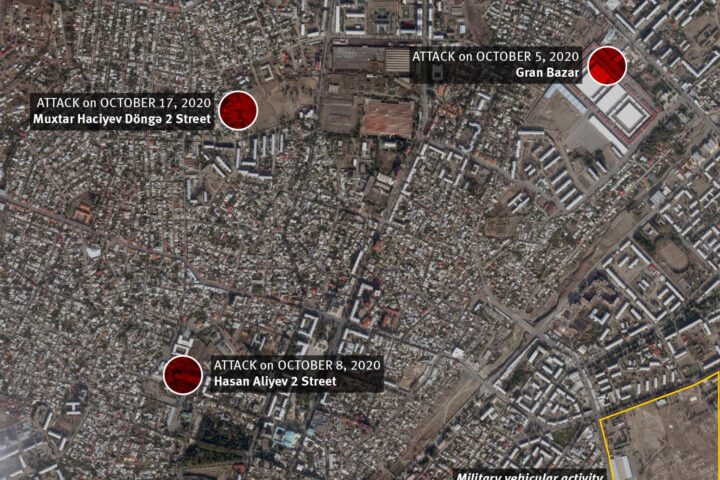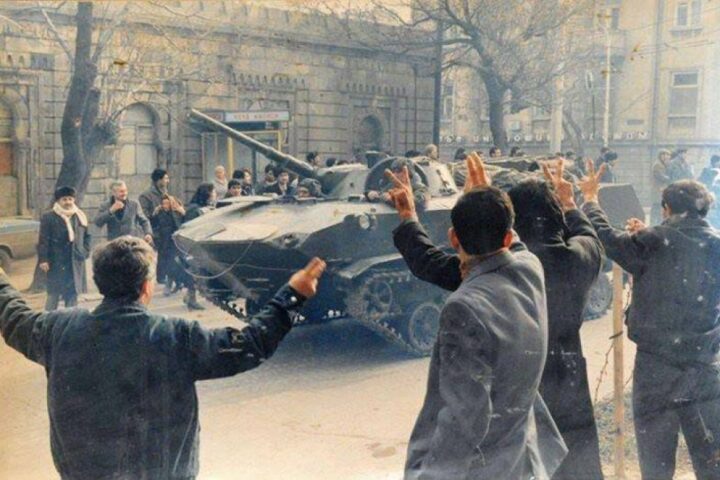Introduction
In 1993 the United Nations Security Council adopted four resolutions on the conflict between Armenia and Azerbaijan.[1] There are few other cases in which the Security Council adopted four resolutions on a particular conflict in a single year, which in itself can be regarded as the acknowledgement of the gravity of the situation. These resolutions are probably the most cited and referred to documents in the context of the conflict between Armenia and Azerbaijan. And this is not a surprise, as the resolutions adopted by the Security Council are the most authoritative decisions of this body empowered by the U.N. Member States through the U.N. Charter to maintain international peace and security.
Although, the texts of the above-mentioned resolutions are well known, especially to those who are familiar with the background of one of the most violent armed conflicts on the territory of the former Soviet Union, few attempts were made to explore in detail the terminology used in these resolutions and the overall context in which these resolutions were adopted. Yet these resolutions were the result of the complex web of interrelated factors, which had a decisive impact on the Security Council’s action in relation to the conflict.
Hence, the purpose of this article is to reconsider the wording of the resolutions in order to analyze the reasons these resolutions were so framed and to elaborate on the implications of the Security Council actions for the conflict settlement process.
Since there is no codified and generally accepted rules of interpretation of the Security Council resolutions, this article combines two methods: one that focuses narrowly on the ordinary or plain textual meaning of the terms of the resolutions, and a second method that interprets the text of the resolutions in the overall context, taking into account the object and purpose of the resolutions as well as the overall political background.[2]
In this context, the factors affecting the daily practice of the Security Council, in particular the complex decision-making process and the role of the permanent members of the Council in this regard, are vitally important. Two aspects will be specifically mentioned in the following sections. First, the U.N. Charter requires that the Security Council in its daily practice must assess problems likely to threaten the international peace and security based on the principles and norms of international law enshrined in the U.N. Charter to determine which of the arguments presented by the parties to a dispute correspond to the factual situation. Therefore, international law provides an overall framework for the Security Council actions. In this regard, an analysis of the terminology used in these resolutions from the perspective of their meaning within international law is crucial for understanding the actual meaning embedded in the adopted texts. Second, the “veto” power of the permanent members of the Security Council continues to give them unprecedented leverage on the Security Council action and allows them to shape decisions in a way that will not harm their interests.
It is equally important to bear in mind that the resolutions were adopted as a response to the dramatic events unfolding in the conflict zone and therefore can be regarded as an assessment by the Security Council of the situation on the ground and as recognition of the facts by this authoritative organ of the United Nations. This article will specifically focus on the way the Security Council addressed the reports from the region on Armenia’s involvement in the conflict. Today, with the continued presence of Armenia’s regular troops in the occupied territories of Azerbaijan,[3] and with Armenia’s president Serzh Sarkisyan and his defense minister Seyran Ohanyan’s routine visits to these territories for inspecting troops stationed there[4] and attending military exercises, the direct military involvement of Armenia in the conflict is not questioned and widely recognized by the international community.[5] However, back in 1993 for at least several permanent members of the Security Council, the military intervention of Armenia was an inconvenient truth, which several members of the Security Council were reluctant to accept.
The following sections will identify factors that may have shaped the stance of the Council’s permanent members and will discuss the repercussions this had for the overall tone of the adopted resolutions and the terminology that was used to frame the texts.
With a view to reconstructing the scene as was seen at that time from the U.N. Headquarters in New York, reference will be made to the reports of the U.N. Secretary-General and the Chairman of the Minsk Conference of the Conference for Security and Cooperation in Europe (CSCE)[6] on dealing with the conflict, which were submitted to the Security Council based on the fact-finding missions’ inquiries. Since the Security Council was also furnished with information on the developments in the conflict zone by regional States, I will consult the correspondence communicated to the Security Council from both Azerbaijan and Armenia, as well as from other states involved in the situation. The verbatim records of the proceedings of the relevant Security Council meetings and the Repertoire of the Practice of the Security Council,[7] serving as an institutional memory of the practice of the Security Council and the Yearbook of the United Nations,[8] which is considered to be a comprehensive and authoritative reference publication about the work of the United Nations, will be consulted with a view to revealing the atmosphere prevailing in the Security Council at that time and to shedding light on the positions of the Council members towards the conflict. These sources are also useful for recreating the chronology of the actions taken by the Security Council with regard to the conflict between Armenia and Azerbaijan.
The Security Council resolutions were not adopted in a vacuum. The conflict drew the attention of the international community, and the developments in the conflict zone quickly became a matter of public knowledge as reflected in the news reports of the leading foreign media outlets, as well as the statements issued by the major international organizations and individual states. Hence, a short reference will be made to the background information based on the news reports, the official documents distributed in the United Nations, and the statements by the relevant international organizations in order to provide the general context of the conflict. For the sake of presenting an objective and unbiased account of the key events of the conflict, this article will refer mainly to the books, articles, and reports on the conflict written by independent scholars and observers who are not from either Armenia or Azerbaijan.
When appropriate, I will elaborate on the meaning of the principles and norms of international law singled out by the Security Council in its resolutions, and identify the obligations of individual states that derive from these norms. I will conclude by dwelling upon the implications of the Security Council action for the current conflict settlement process.
The U.N. Charter as a framework for the Security Council’s action
The primary purpose of the United Nations and its central organ the Security Council as stated in the first Article of Chapter one of the U.N. Charter is “to bring about by peaceful means, and in conformity with the principles of justice and international law adjustment or settlement of international disputes […].”[9] Thus, the U.N. Charter establishes international law as a clear-cut framework for the Security Council within which to address a particular situation threatening international peace and security. Higgins, analyzing the place of international law in the decisions adopted by the Security Council, noted that it is for the Security Council to decide which of the legal propositions presented by the parties to the dispute happened to accord with the facts of the case.[10] She also recognized the right of the Security Council to “make authoritative and binding interpretations of Members’ legal obligations under the Charter.”[11]
At the same time, because of the “veto” power reserved for the permanent members of the Security Council by the founders of the United Nations, there are voices constantly challenging the legitimacy of the collective authority of the Council on the grounds that the proceedings in this organ are dominated by the powerful few and, hence, the Council is merely an instrument in the hands of the major powers for advancing their interests, rather than a mechanism of maintaining international peace and security – a core mission prescribed in the Charter.[12] Under the circumstances, being guided in its daily practice by the principles and norms of international law is an indispensable precondition and a source of legitimacy for the Security Council in the eyes of the U.N. Member States. Due to the legitimacy vested in the Security Council, its resolutions should be regarded as authoritative decisions of the United Nations to be reckoned with. According to Higgins, “the application of legal rules to particular circumstances forms part of the United Nations practice and, over a period of time, becomes part of the stream of authoritative decisions which are looked to as a source of law.”[13]
An analysis of the practice of the Security Council reveals that the decisions taken by this U.N. organ often reflect the delicate balance between the obligation of the Security Council to address situations threatening international peace and security based on the established facts and abiding by the principles and norms of international law enshrined in the U.N. Charter, and, on the other hand, safeguarding of interests of the permanent members of the Council. Such quest for “middle ground” to accommodate the interests of all permanent members while remaining in the realm of the legal framework set by the U.N. Charter over the years has now become an institutional constraint. Thus, in critical moments the Council can be preoccupied more with hammering out the “convenient” text of its resolutions rather than scrupulously exploring the merits of a particular case. Throughout its history the Security Council has established a certain pattern: It avoids explicitly blaming those perpetuating illegal acts (an especially relevant strategy in cases where the permanent members have a particular interest in the matter) while trying to maintain international peace and security through outlining measures believed to prevent further exacerbation of the situation and, potentially, the resolution of a conflict. From this perspective, due to the complex decision-making process in the Security Council, the recommendations and decisions adopted by this central body of the United Nations can be qualified as the art of the possible. The process of the adoption of the resolutions related to the Armenia-Azerbaijan conflict and the terminology used in their texts reinforces this pattern.
1991: Internal conflict becomes international
Appearing on the radar screen of the U.N. Security Council
The Security Council’s decision to act in the aftermath of the armed attack of April 1993
Resolution 822: Resolving a dilemma between the undeniable and the unacceptable
The Security Council action in response to further escalation of the conflict
Conclusion: The implications of the U.N. Security Council action for the settlement of the conflict
[no_toc]








